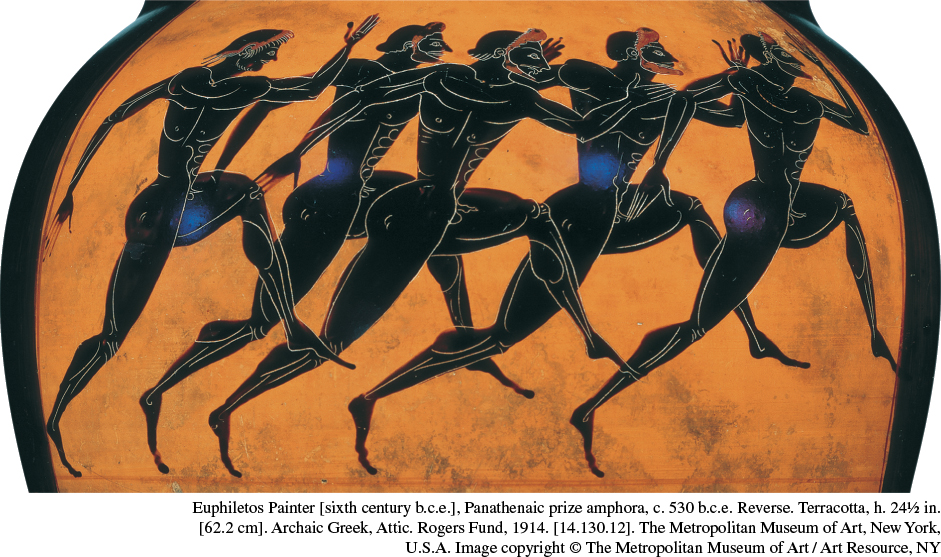
Athletic Competition
Greek vase painters often showed male athletes in action or training, perhaps in part because athletes were customers who would buy pottery with such scenes. As in this painting of an Athenian foot race from around 530 B.C.E., the athletes were usually shown nude, which was how they competed, revealing their superb physical condition and strong musculature. Being in excellent shape was a man’s ideal for several reasons: it was regarded as beautiful, it enabled him to compete for individual glory in athletic contests, and it allowed him to fulfill his community responsibility by fighting as a well-conditioned soldier in the city-state’s citizen militia. Why do you think the figure at the far left does not have a full beard? (Euphiletos Painter [sixth century B.C.E.], Panathenaic prize amphora, c. 530 B.C.E. Reverse. Terracotta, h. 24½ in. [62.2 cm]. Archaic Greek, Attic. Rogers Fund, 1914. [14.130.12]. The Metropolitan Museum of Art, New York, U.S.A. Image copyright © The Metropolitan Museum of Art / Art Resource, NY.)